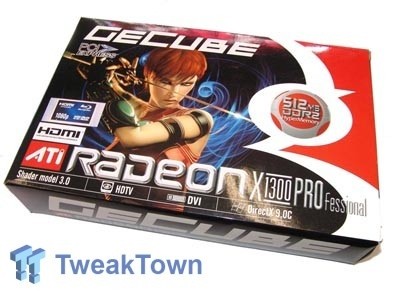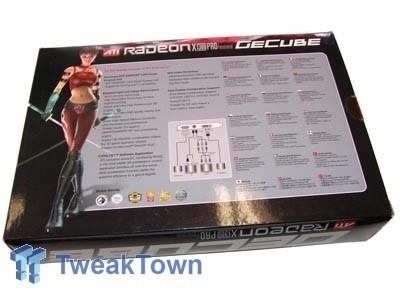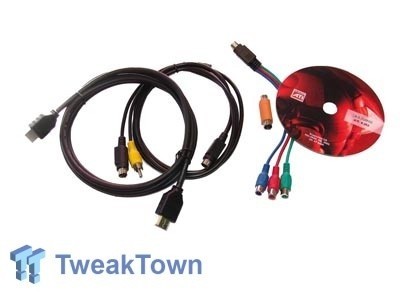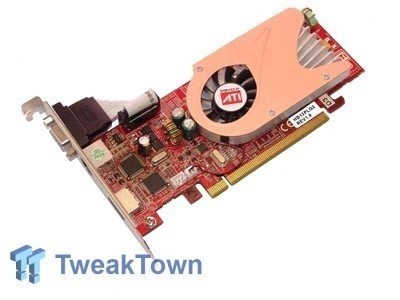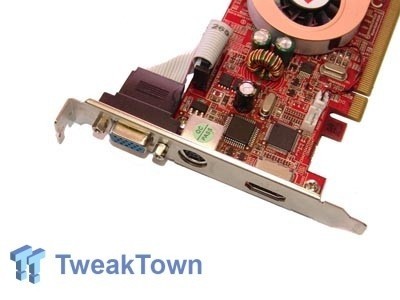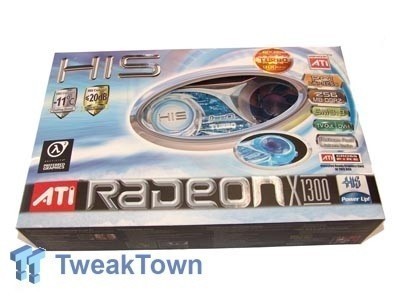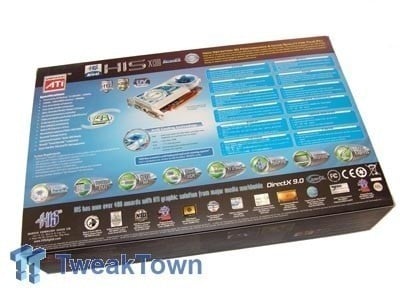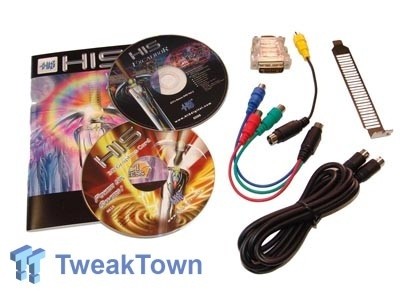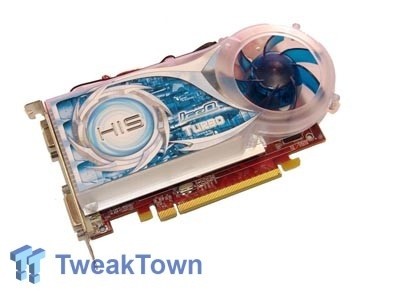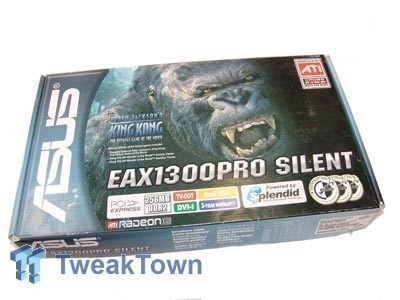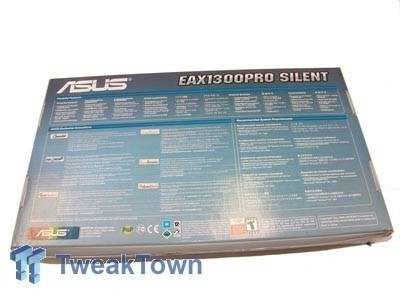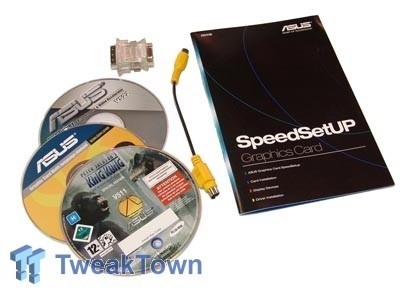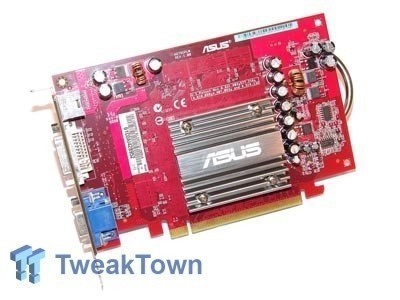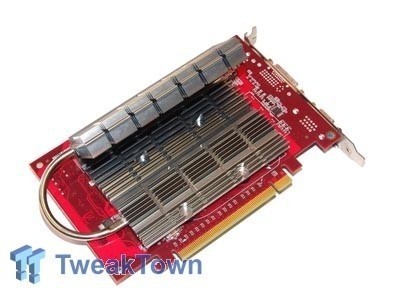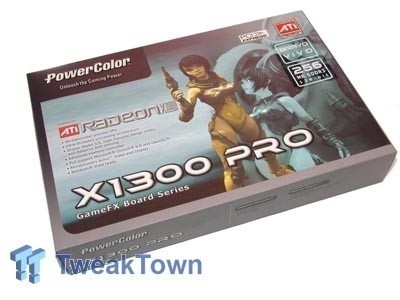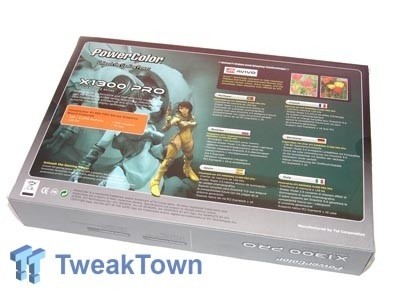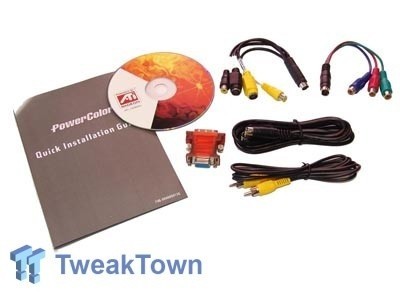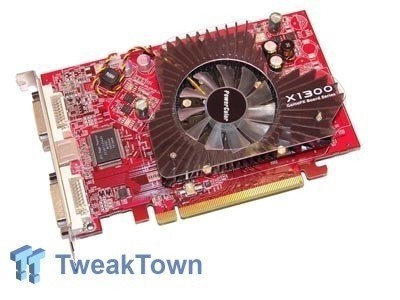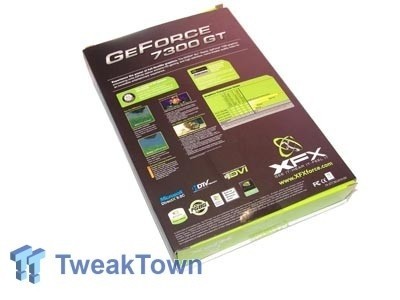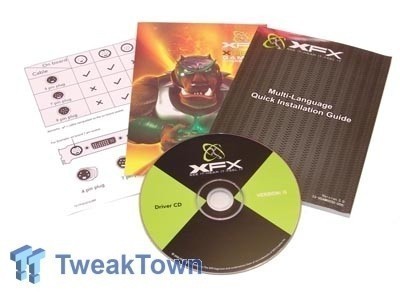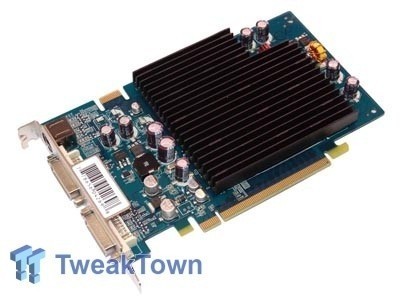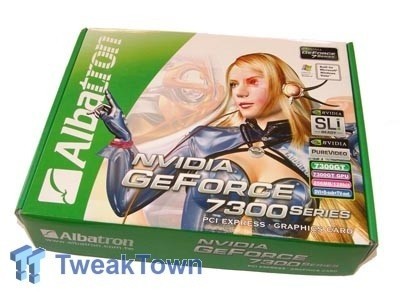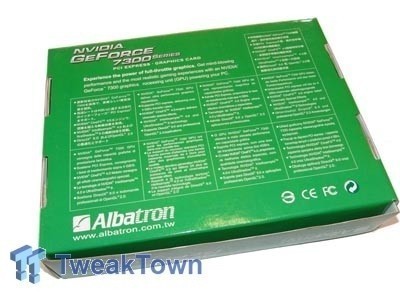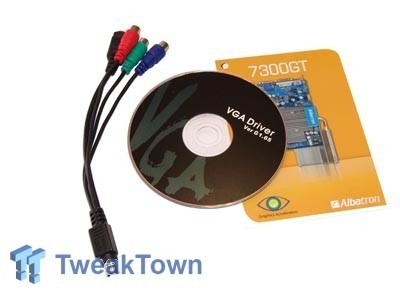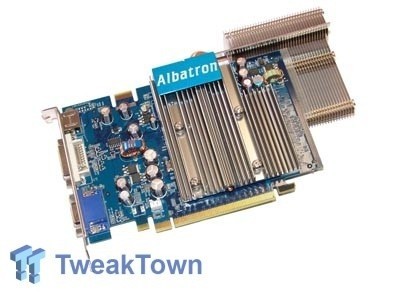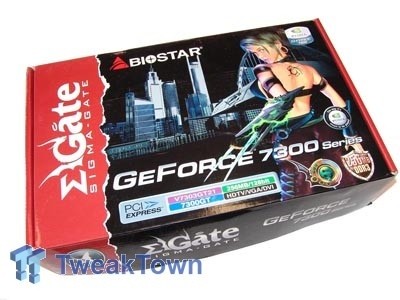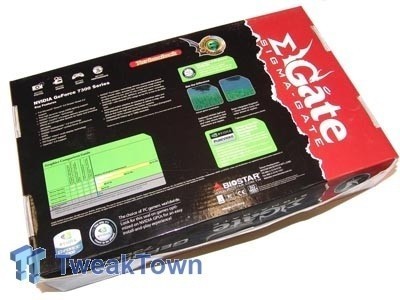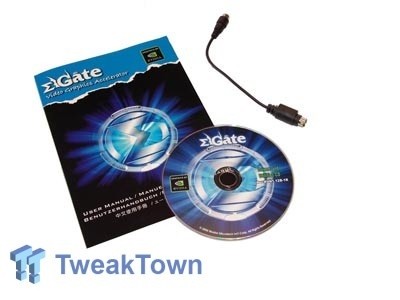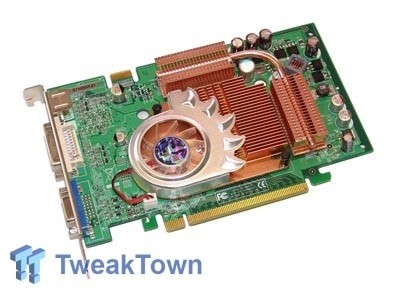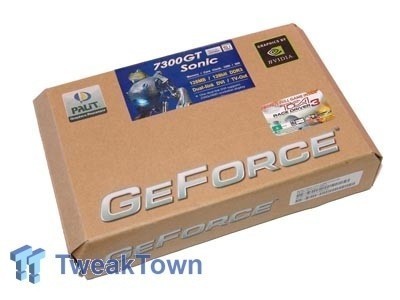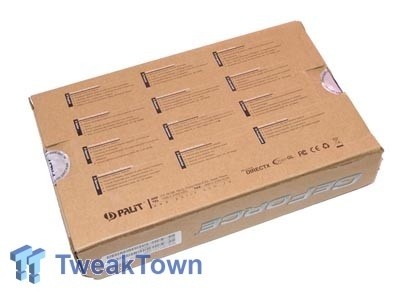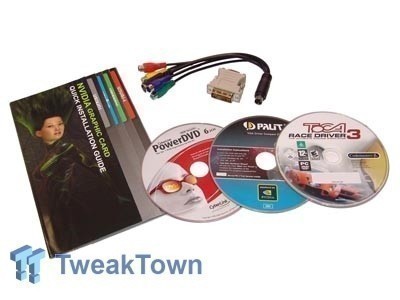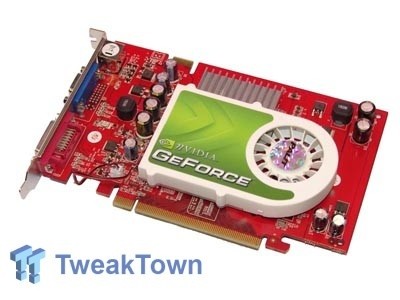Introduction
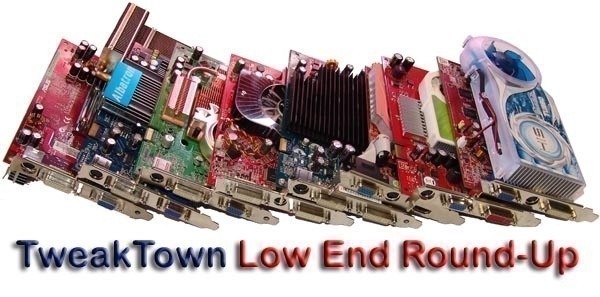
As much as we try to ignore it, there is no denying that the low-end market is there and a huge market to both nVidia and ATI in terms of revenues. So we thought about it and started sending some emails out and today we have eight graphics cards from an equal number of different companies.
GeCube, HIS, ASUS and PowerColor are all representing the red ATI team with the Radeon X1300 core while XFX, Albatron, Biostar and Palit represent the green nVidia team with the GeForce 7300GT core. All cards start at roughly the same price and offer a few different variants which we will be looking at today.
If you want to do a bit of gaming but your budget is tighter than you wish it was, this is the roundup for you. Placing the cards through a number of different benchmarks we will see what sits where and which area you should be focusing those hard earned dollars on. Some are perfect for your Home Theater PC and others are tweaked for better gaming performance.
We will be following a slightly cut down version of our normal graphics card review with each card getting a single page and using the same benchmarks that are used in our monthly Catalyst performance articles as they offer a good range of synthetic and real world tests that offer Direct3D, OpenGL, HDR, Anti Aliasing and Antistrophic Filtering testing environments.
So let's get started with the first card in the roundup, the GeCube X1300PRO HDMI, and follow on from there!
GeCube X1300PRO HDMI
First off the line is the brand new Radeon X1300PRO from GeCube which sports a very sexy looking HDMI port. Like DVI, HDMI offers a pure digital signal but is also able to transfer up to 8 channel audio which is more commonly known as 7.1.
A lot of TVs currently offer HDMI and not DVI so the release of a HDMI card made sense - even if you're not using the audio ability of the cable, you are making full use of the digital signal which is exactly what you want on an expensive LCD TV or Plasma.
The box uses the standard GeCube layout with an emphasis on the card supporting HDMI, which of course allows us to make use of non-existent items like HD DVD and Blueray. The card is simply an X1300 which is going to be fine for most people as the product is directly aimed at the home theater market that don't need a massive amount of 3D processing power for games.
The back of the box is the same as any X1300 from GeCube, while they show the normal connections of what can go where because they haven't updated it the box shows us nothing about the HDMI connection. With that said though, it really isn't hard to figure this stuff out - just plug the cable in.
The package inside is pretty much the norm for a lower end card. It is nice to see that GeCube are including a HDMI cable as it really isn't much use having the connection on the card without being able to use it. We also have a driver CD and our other forms of cables to make use of TV Out with none of them being nearly as good as the HDMI connectivity.
Like any good home theater card, it is low profile which is handy for people who have opted for a smaller case. The only problem is you lose the VGA port but this shouldn't be an issue. It would have been nice to see a silent version but there is a small fan that doesn't generate too much noise.
We have our VGA and normal TV out port along the side with our HDMI port. The HDMI port also offers HDCP (or High Definition Content Protection) which is a new form of copyright protection. It really is a necessity for anyone going into the next generation of digital entertainment.
Clocks speeds on the card are 500MHz core and 520MHz memory. 256MB of DDR2 is included on the board and using the Hyper Memory technology can be taken to a total of 512MB depending on the amount of system RAM you have.
HIS X1300 Turbo
Card number two is the X1300 Turbo from HIS which sports a fancier cooler and an increase in clock speeds.
Using the older design again we can see the card through the front window along with all the main information around it including the memory, speed and features. We can clearly see that this is an IceQ Turbo model which carries the better quality IceQ cooler and an increase in core and memory clock speeds.
Turning the box over we have the extended feature list, picture of the card and a few awards out of the hundreds that HIS have been given over the years. Nothing to out of the ordinary and if you're anything like us you will be ignoring what the box says and just getting straight into the package.
Inside we have our manual and driver CD along with the ATI bonus DVD which comes with... wait for it... Dungeon Siege! We would love to know how many of these DVDs got printed up by HIS because it's a bit annoying to know that your $100 X1300 and your $400 X1900 both come with the same game. We also have our TV out cables, DVI to VGA adapter and a bracket to cover the extra slot so air can still be exhausted.
As we mentioned the X1300 Turbo from HIS uses the IceQ cooler which not only cools more effectively then the standard heatsink but is also extremely quiet. The increased cooling power also gives HIS the ability to run the card a little faster giving us a core and memory speed of 600MHz / 800MHz.
ASUS X1300PRO Silent
ASUS are easily known for creating a more expensive card that can't always be justified but fortunately the X1300PRO Silent from ASUS has some nice features making it a bit more justifiable than normal.
With the big ugly looking Kong on the front of the box we can clearly see that they are pushing the fact that a full version copy of King Kong is included. We can also see on the front of the box the main features of the card like 256MB DDR2, TV-Out, DVI, Dual VGA and so on.
Turning the box over we have some more product features along with some of the technology that ASUS implement with all there graphics cards. Some of the features are cool others you simply won't use.
Like we saw on the front of the box King Kong is included in the package. We also have an electronic manual, driver CD, DVI to VGA adapter, S-Video to RCA and a speed set up guide.
The ASUS Silent has one of the more hardcore cooling solutions here today with it being quite fancy. To create the best cooling solution ASUS have flipped the card around and have the core on the back of the card - weird? Yes! It's not really a card that produces a lot of heat in the first case, so it does seem weird for ASUS to go to great lengths to flip the core over but they have done it anyway.
The card comes clocked at 600MHz on the core and 800MHz on the memory.
PowerColor X1300PRO Bravo
It's been a while since PowerColor has made its way into our labs but they came in style this time around with the X1300PRO Bravo. The Bravo naming scheme tells us that it's a little more special over standard cards.
As mentioned we have ourselves a Bravo X1300PRO and you can clearly see that features like VIVO and DDR3 memory is present. We have a small list of main features also on the front.
Turning the box over we see some more features that the X1300PRO offers. Most of the information is very standard and seen on most boxes in some shape, way or form.
Moving to the inside of the box we have the normal cables you would expect for card that offers VIVO and HDTV. We also have a DVI to VGA connector, quick install guide and a driver CD.
Moving to the card itself we can clearly see the fancy heatsink fan that covers both the core and the memory. To the right of the cooler we can see the ATI Rage Theater chip which gives us our VIVO functionality and of course our Dual DVI ports along with the S-Video connector to make use of VIVO. For a budget graphics cards, it's not light on features.
As mentioned bring a Bravo model the card is clocked higher than the normal cards and comes with a core speed of 600MHz and huge memory speed of 1000MHz.
XFX 7300GT
XFX is one company focused on providing very high-end products with some massively overclocked products. This time around we are looking at one of the more boring products from the range. Although boring in comparison, still an excellent contender for the low-end market so let's have a closer look.
We have a cut down version of what the 7950GX2 box looked like with the big mean looking wolf man going to a fancy dinner where he wears a mask. We can see that the card supports SLI and sports 256MB of DDR2 memory. It also has "Ultra Silent Cooling".
Turning the box over we have our normal extended specs along with a few logos like HDTV, DVI and etc. We have some comparisons of what some of the technology offered by nVidia does when it is enabled along with a few other bits and pieces.
Opening the box up we don't have too much inside, a leaflet explaining the connections, a quick install guide, brochure with other XFX products and a driver CD. The light packages are quite normal on most low-end graphics cards as they try to save the end user as much money as possible.
WOW! That does look silent - no hang on "Ultra Silent". There isn't a whole lot to look at with the front of the card thanks to the massive heatsink that covers it. We can clearly see the SLI connector at the top of the card but we can also see two DVI connectors along with our S-Video port. Clock speeds for the XFX 7300GT come in at a very reference 350MHz core and 667MHz memory.
Albatron 7300GT
It's been a while since we have seen anything from Albatron but they are number two on the list of GeForce 7300GT cards.
Like most of our other boxes we have a pretty standard layout - main features and main specifications are located on the front of the box with a number of logos showing support for SLI, PureVideo and Vista.
The back of the box is very plain and just gives us the very standard run of the mill chip features in a number of languages. No picture of the card or anything like that.
Moving to the contents of the box we have a very light package with really nothing but a driver CD and HDTV out cable. We find that most of the times on the cheap cards companies usually do the bare minimum and that's OK because he helps keep the price as low as possible.
Once you get to the card it is surprising to see that it uses a heat pipe cooler - it is disappointing not to see this advertised anywhere on the front of the box. When you walk into the shop and see it sitting next to another GeForce 7300GT, if the Albatron card was more expensive you would wonder why but find nothing on the box to let you know about the silent solution.
The solution isn't bad at all and uses copper and aluminum to transfer the heat away from the core. We can see that a VGA and DVI are included along with our standard TV Out. Like all other 7300GT cards, we can clearly see that the SLI connector at the top of the card if you want to get into some silent, budget, SLI action.
The Albatron 7300GT comes with a core clock of 400MHz and a memory clock of 700MHz, which is slightly up on the standard clock speeds.
Biostar 7300GT
To be completely honest with you, I wasn't sure if Biostar even made graphics cards these days as it seems everyone is so focused on the major companies that we forget about some of the others. With that said though, Biostar have got a bit of a gem on their hands with a DDR3 model 7300GT.
The front of the box is your pretty standard layout - main specifications, model number and something to draw your eye to it over others. The Sigma-Gate logo is what they call their graphics card line up and can be seen on all models.
Turning the box over we have our very standard key features layout with a comparison of some of the technology that is used on the card. The top of the box also shows us that this is a Turboclock model which means it comes overclocked. With the inclusion of the faster DDR3 memory, you would want to think so otherwise the benefits would be quite limited.
Opening up the box we have very little - a user manual, driver CD and a S-Video to RCA connector for TV out. One of the lightest packages around but we will have to see how performance goes with the DDR3 memory.
Getting to the card we of course see the SLI connector on the top along with a DVI, VGA and S-Video connector on the I/O panel. The funky copper fan is designed quite well except you can see that no air is really directed towards the top of the memory. The Biostar 7300GT sports a healthy 475MHz core and 1000MHz memory clock.
Palit 7300GT Sonic
Owning companies like Gainward and Xpertvision, Palit are a massive player in the VGA market and they sell cards from both ATI and nVidia. We haven't had much of a look at the Palit line up but the GeForce 7900GT 512MB cards we looked at a bit back left us with a smile on our face and there is no doubt this little bad boy should do something similar.
While its not the most attractive box around the traps, it does tell us pretty much everything we need to know - the main specs are front and center, the brand is in the top left corner, the chip maker on the right and a sticker that lets us know that a full version of TOCA Race Driver 3 is included.
The back of the box doesn't give us a whole lot of detail but a small technical specification in a multitude of languages. While the box isn't all that fancy it does what it needs to do and that is protect the card in transit and let us easily decipher what card it is.
Opening the package up it is quite light with the HDTV out cable being included along with a DVI to VGA connector. We also have the Quick install guide along with a copy of PowerDVD 6 and the driver CD. The biggest surprise is the inclusion of TOCA Race Driver 3 which is quite a recent game - honestly, for a card to include a game like this is fantastic and really separates the men from the boys.
Moving to the card itself there isn't a lot that really stands out. We have a little cooler and a memory sink covering the DDR3. A single DVI and VGA port are found along with the TV out adapter. Like all 7300GTs we have the SLI connector located across the top.
This particular model is the "Sonic" version which lets us know that it is part of the overclocked range from Palit. This is so much more though then just a little overclocked card as it sports DDR3 memory like the Biostar. We also have a very nice core and memory speed of 500MHz / 1200MHz which puts it on top of the pack.
Benchmarks - Test System Setup and 3DMark05
Test System Setup
Processor(s): AMD Athlon X2 3800+ (2.6GHz - 260MHz FSB with 1:1 RAM)
Motherboard(s): DFI Lanparty UT SLI DR Expert (Supplied by Bronet)
Memory: 2 X 1GB G.Skill HV PC4000 @ 260MHz (Supplied by Bronet)
Hard Disk(s): Hitachi 80GB 7200RPM SATA 2
Operating System: Windows XP Professional SP2
Drivers: ATI Catalyst 6.7 and nVidia ForceWare 91.31 and DX9c (latest official at testing time)
Due to the large number of cards and the pain that it causing watching an X1300 Hyper Memory run 3DMark06 we have cut down the amount of benchmarks we have used slightly. We are using our normal Catalyst performance article layout which covers all bases - synthetic, real world, Direct3D, OpenGL, HDR and AA and AF.
While some might think we are being a bit optimistic benchmarking at 1600 x 1200, the results really did surprise us in some situations.
The normal test system will be used for the moment but you better start to emotionally unattach yourself from it like we have because Core 2 Duo will be arriving in my hot little hands sooner then later where the system will get a nice overhaul.
3DMark05
Version and / or Patch Used: Build 120
Developer Homepage: http://www.futuremark.com
Product Homepage: http://www.futuremark.com/products/3dmark05/
Buy It Here
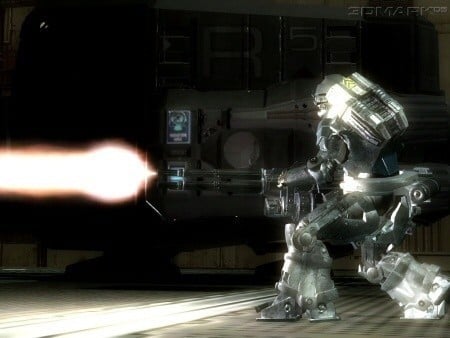
3DMark05 is now the second latest version in the popular 3DMark "Gamers Benchmark" series. It includes a complete set of DX9 benchmarks which tests Shader Model 2.0 and above.
For more information on the 3DMark05 benchmark, we recommend you read our preview here.
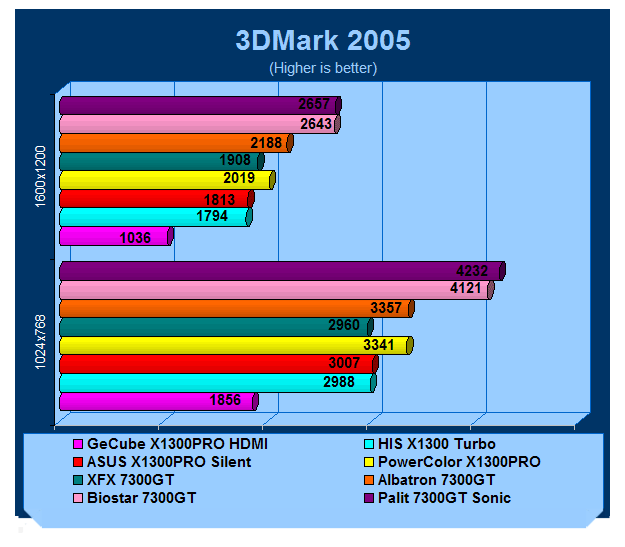
And they are off and racing!
First off is the old faithful 3DMark05 showing us the difference between all the cards.
We can clearly see that the DDR3 7300GT models are out in front at both resolutions; the X1300PRO Bravo from PowerColor clearly shows strength with the X1300 from GeCube being the slowest as we would expect considering it is targeted towards the HTPC.
Let's continue on and find out if this is the trend throughout our complete set of benchmarks.
Benchmarks - 3DMark06
3DMark06
Version and / or Patch Used: Build 102
Developer Homepage: http://www.futuremark.com
Product Homepage: http://www.futuremark.com/products/3dmark06/
Buy It Here

3DMark06 is the very latest version of the "Gamers Benchmark" from FutureMark. The newest version of 3DMark expands on the tests in 3DMark05 by adding graphical effects using Shader Model 3.0 and HDR (High Dynamic Range lighting) which will push even the best DX9 graphics cards to the extremes.
3DMark06 also focuses on not just the GPU but the CPU using the AGEIA PhysX software physics library to effectively test single and Dual Core processors.
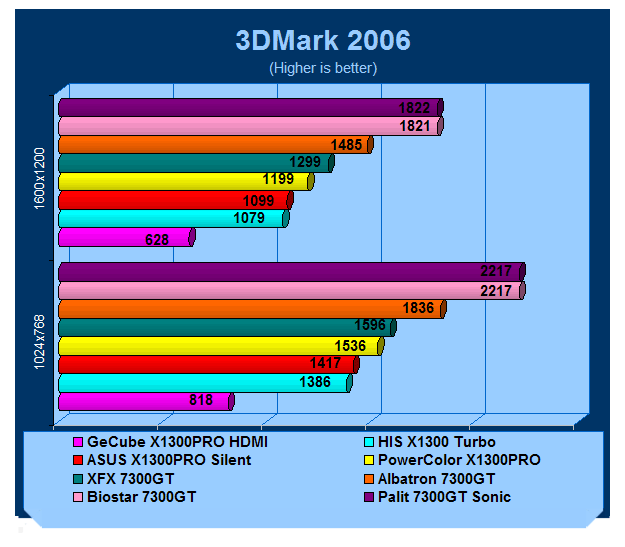
Moving to the more intensive 3DMark06 we can see that the layout is similar except the PowerColor X1300PRO Bravo has dropped back with it being similar to the standard 7300GT from XFX.
Benchmarks - Half Life 2 (Lost Coast)
Half Life 2 (Lost Coast)
Version and / or Patch Used: Unpatched
Timedemo or Level Used: Custom Timedemo
Developer Homepage: http://www.valvesoftware.com
Product Homepage: http://www.half-life2.com
Buy It Here
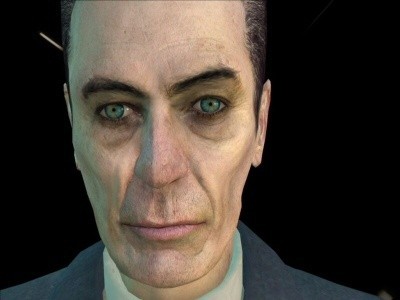
By taking the suspense, challenge and visceral charge of the original, and adding startling new realism, responsiveness and new HDR technology, Half-Life 2 Lost Coast opens the door to a world where the player's presence affects everything around him, from the physical environment to the behaviors even the emotions of both friends and enemies.
We benchmark Half Life 2 Lost Coast with our own custom timedemos as to avoid possible driver optimizations using the "record demo_name" command and loading the timedemo with the "timedemo demo_name" command - For a full list of the commands, click here.
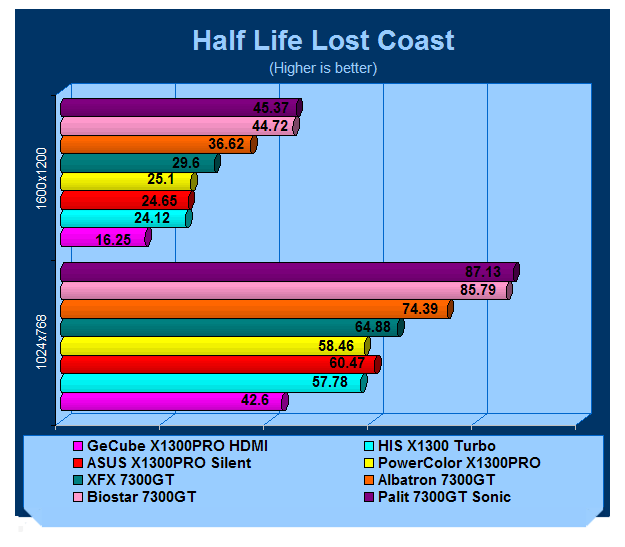
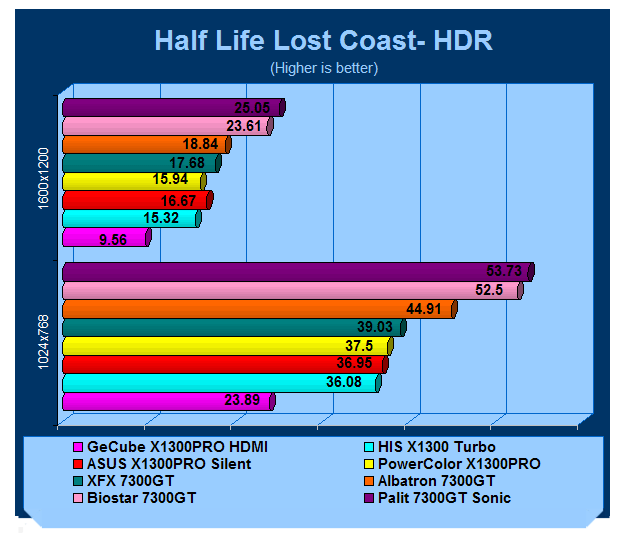
Moving to our first real world benchmark we see some interesting results.
For starters it's clear with the DDR3 7300GT playing Half Life 2 with HDR enabled at 1024 x 768 is extremely possible. Playing Half Life 2 without HDR can be done at 1024 x 768 with all cards but if you feel like venturing to 1600 x 1200 you're going to want a DDR 7300GT or adjust texture details. HDR at 1600 x 1200 just simply isn't possible with any of the cards.
Benchmarks - Doom 3
Doom 3
Version and / or Patch Used: Unpatched
Timedemo or Level Used: Built-in Timedemo
Developer Homepage: http://www.idsoftware.com
Product Homepage: http://www.doom3.com
Buy It Here
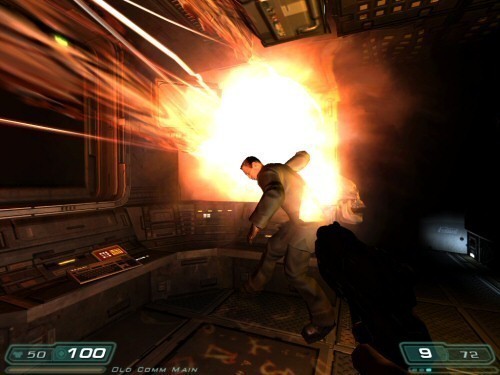
Doom 3 is still one of the most popular games at the moment and is quite intensive in the 3D department, even though it is starting to age. With our own custom time demo we are able to give a realistic rating on what kind of FPS you will be achieving.
For more information on benchmarking Doom 3 we recommend you check out our extensive article regarding it here.
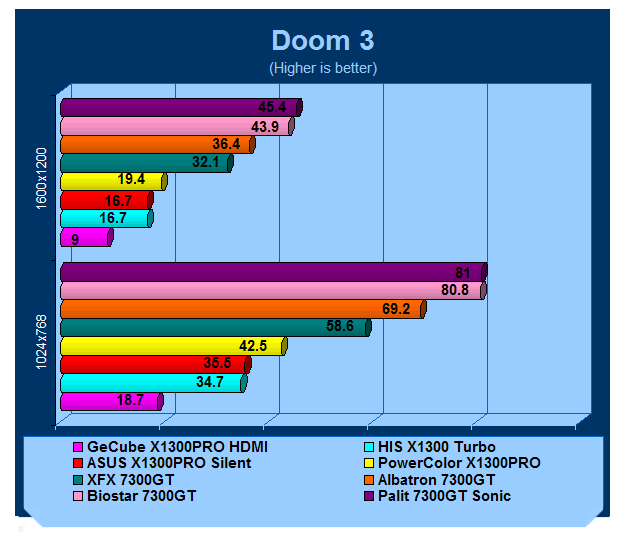
We can see in Doom 3 similar results to Half Life 2. The DDR3 7300GTs clearly make playing Doom 3 at its maximum settings a possibility at 1600 x 1200.
The 7300GT offers an excellent experience when it comes to 1024 x 768 gaming with the PowerColor X1300 Bravo scraping in offering a playable environment. The X1300s below that though clearly need the settings adjusted.
Benchmarks - F.E.A.R.
F.E.A.R.
Version and / or Patch Used: Unpatched
Timedemo or Level Used: Built-in Timedemo
Developer Homepage: http://www.vugames.com
Product Homepage: http://www.whatisfear.com/us/
Buy It Here
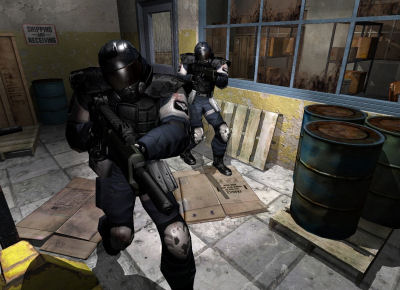
F.E.A.R. (First Encounter Assault Recon) is an intense combat experience with rich atmosphere and a deeply intense paranormal storyline presented entirely in first person. Be the hero in your own spine-tingling epic of action, tension, and terror...and discover the true meaning of F.E.A.R.
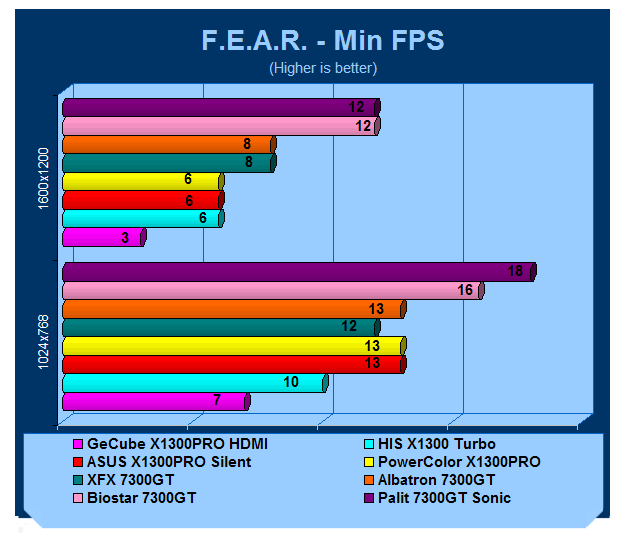
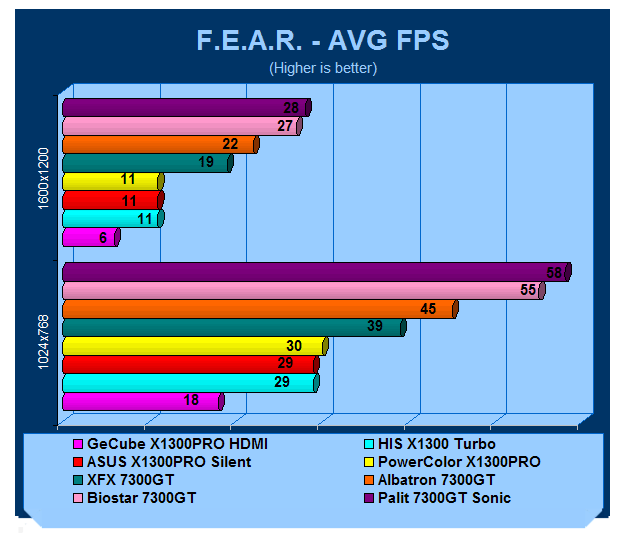
Fear something that always favors ATI shows us that the X1300PROs can keep up with the entry level 7300GTs but are no competition for the higher end DDR3 7300GTs.
While you could play F.E.A.R. at 1024 x 768 on a 7300GT DDR3 we would drop the settings to medium to give that MIN FPS a bump up to something around the 25FPS mark to give us a smoother gaming experience.
Benchmarks - Quake 4
Quake 4
Version and / or Patch Used: Unpatched
Timedemo or Level Used: Necro666
Developer Homepage: http://www.idsoftware.com
Product Homepage: http://www.quake4game.com
Buy It Here
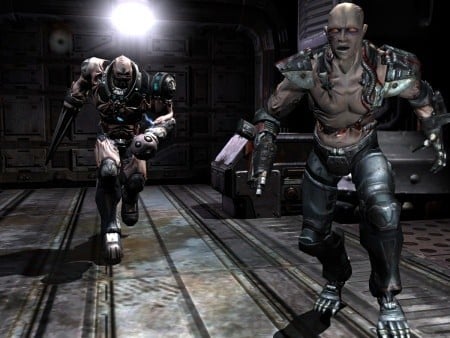
Quake 4 is one of the latest new games to be added to our benchmark suite. It is based off the popular Doom 3 engine and as a result uses many of the features seen in Doom. However, Quake 4 graphics are more intensive than Doom 3 and should put more strain on different parts of the system.
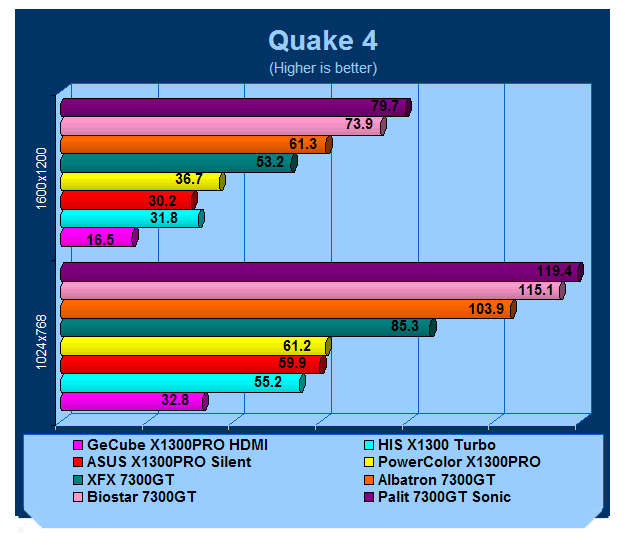
Another OpenGL game clearly shows how much nVidia dominate this market in this format. All cards bar the GeCube offer a clearly playable experience at the lower resolution, moving to 1600 x 1200 it is clear thought that you're going to want to have a 7300GT under your belt.
Benchmarks - Serious Sam 2
Serious Sam 2
Version and / or Patch Used: Unpatched
Timedemo or Level Used: Branchester (HardwareOC Bench)
Developer Homepage: http://www.croteam.com
Product Homepage: http://www.serioussam2.com
Buy It Here

Picking up where Serious Sam: Second Encounter left off, Sam has rocketed off towards the conquered planet of Sirius, the new home of the notorious Mental. While en route, the Great Wizards Council of the nearly eradicated Sirian civilization telepathically contacts Sam to aid him in his quest to destroy Mental and help restore Sirius. He is then sent on a quest to find the fragments of a mystical medallion scattered throughout the galaxy that will bestow Sam with the power to defeat Mental.
While Serious Sam 2 is not one of the most intensive games in our benchmark suite, we can stress the system by enabling HDR.
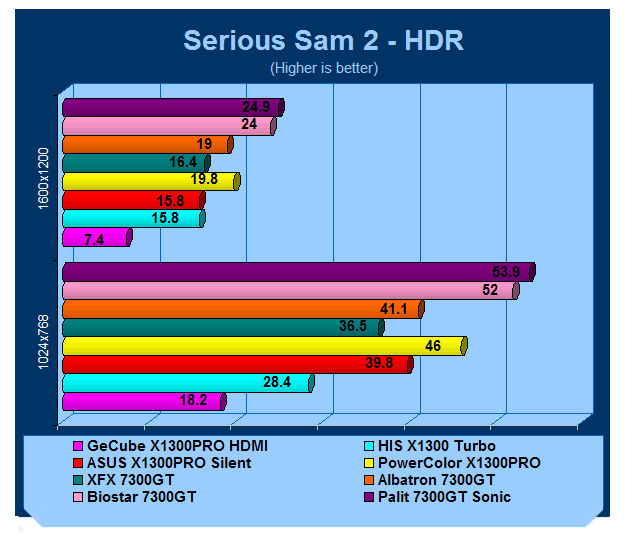
Serious Sam 2 again shows the PowerColor X1300PRO Bravo coming back into the picture but even though it does have DDR3, it clearly is unable to catch the 7300GT cards sporting the same, faster memory. Playing SS2 with HDR isn't going to be possible at 1600 x 1200 but with a bit more fiddling around in the options you're going to be able to play at 1024 x 768 without any major issues.
Benchmarks - High Quality AA and AF
High Quality AA and AF
Our high quality tests let us separate the men from the boys and the ladies from the girls. If the cards weren't struggling before they will start to now. ATI are able to offer HDR and AA at the same time unlike nVidia so we have ran our HQ Lost Coast test with HDR on.
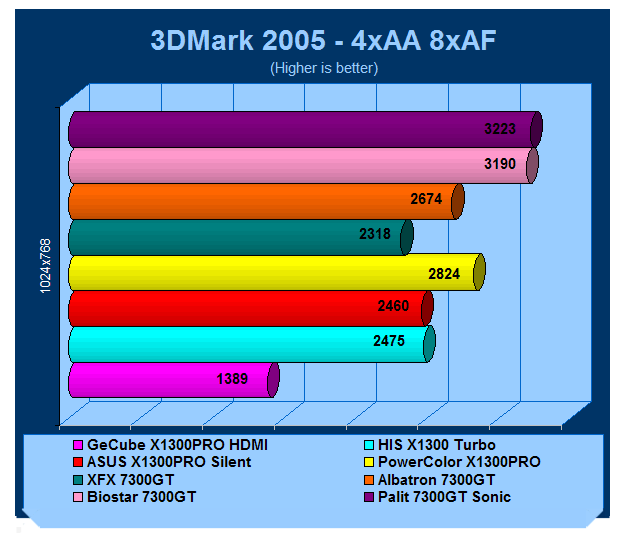
Like our first graph we see that the Bravo X1300PRO from PowerColor is a contender to the standard 7300GT but is just nipping on the heels of the DDR3 7300GTs from both Biostar and Palit.
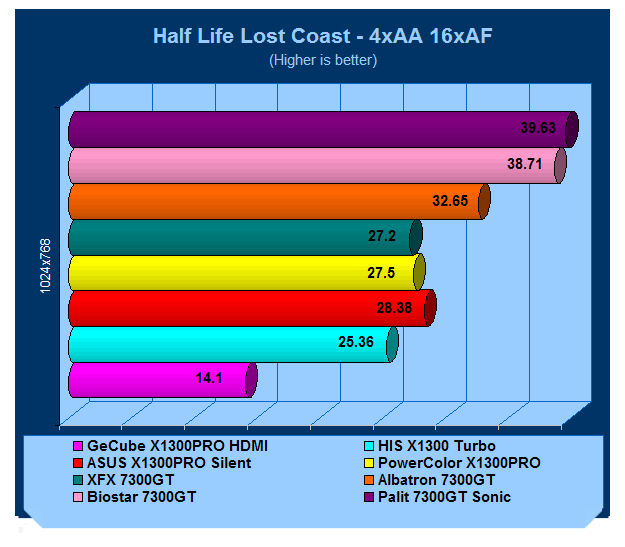
Above 30 is a playable game and while we see the 7300GT DDR3 tipping almost 40 the minimum FPS is going to be a pain so if you want to play with some AA you might want to adjust a few other settings to medium to give you that perfect experience.
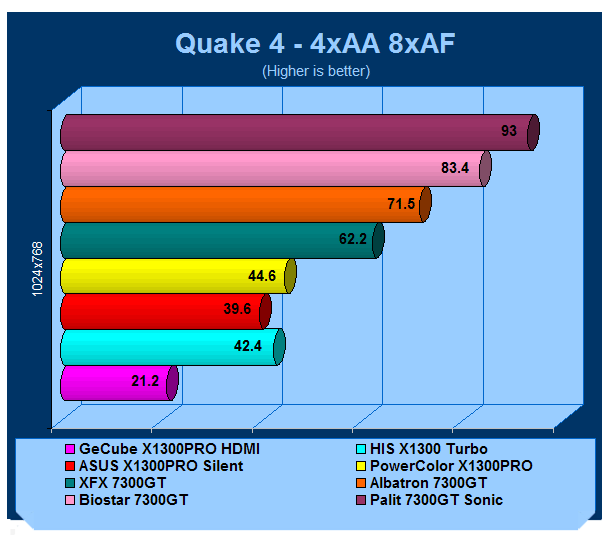
AA and AF in Quake 4 is something that you wouldn't think is possible but the 7300GT has absolutely no problems battling the hard task with the Palit 7300GT "Sonic" getting an almost unbelievable 100 FPS average.
Final Thoughts on the cards
GeCube X1300PRO HDMI
This card is clearly focused towards one market and one market only. The home theater market clearly does not need any real form of graphics power but do want the absolute best image quality. Since DVI isn't available on all TVs and HDMI is quickly becoming the "in" interface, the GeCube X1300PRO HDMI is the perfect card.
While the home theater PC market is still a bit of a niche it is growing thanks to products like Windows Media Center and Intel jumping on with Viiv.
When it comes to scoring though it's not always about what is the fastest, it's sometimes about what is different. The GeCube X1300PRO HDMI is clearly different and while the package is lighter then others, it comes with the very important HDMI cable. This is going to save you some pretty pennies. It would have been nice to see a low profile bracket also included but we suppose you cannot have it all.

Rating - 8.5 out of 10 and TweakTown's "MUST HAVE" Best Features Award
HIS X1300 Turbo
Even with the IceQ ability and iTurbo function the HIS X1300 just can't compete strongly against the other cards we have here.
While in a single review we would have liked the game, cooler and increased clock speed, when you throw it into the ring with seven other cards the competition becomes a lot stronger and it really separates the men from the boys like we mentioned previously.
Rating - 6.5 out of 10
ASUS X1300PRO Silent
The ASUS card is a bit different to everything else we have seen before - the weird design with the core on the back of the card is interesting to say the least.
The cooler is excellent quality and is an extremely solid design. It is clear why you pay slightly more for the ASUS over the other brands, you throw in the fact that it also comes with a full version copy of King Kong the deal becomes a little sweeter.
The problem is that they seemed to put so much effort into the design of the card that they could have probably aimed at doing it on a GeForce 7300GT GPU which we can see today is a clear winner over the ATI Radeon X1300 VPU.
ASUS have done a good job with the card and bundle it is just let down by a core that just can't pack the same amount of punch as the nVidia's GeForce 7300GT.
Rating - 7.5 out of 10
PowerColor X1300PRO Bravo
The problem with the PowerColor X1300PRO Bravo isn't PowerColor but ATI. Sure in an environment where we only compared X1300s it's a clear winner but when you throw cards like the 7300GT DDR3 into the mix, it really has its work cut out for it.
Feature wise it is very good - Dual DVI and VIVO make it stand out from the pack and the use of DDR3 really give the little X1300 core a bit more grunt but clearly not enough to play with the big bad 7300GT boys.
If you really feel that the image quality on the ATI line up is better then what nVidia then go for your life and buy the Bravo, but if you're looking for more performance you need to start looking over to the green side.
Rating - 8 out of 10
Final Thoughts on the cards continued
XFX 7300GT
The XFX 7300GT is a very reference design but still continues to compete strongly against the X1300PRO with it clearly even beating the DDR3 model that is offered by PowerColor in some benchmarks.
If you're looking for a single slot solution that is noiseless for your home theater system and can't or don't intend to make use of something like HDMI, then the XFX 7300GT is a good option.
It would have been nice to see a DDR3 version from XFX with some mean clocks but maybe in future.
Rating - 7.5 out of 10
Albatron 7300GT
The Albatron is a good card but they really need to market the cooler better. It is quite a good cooler but without actually telling people about it they would simply opt for something cheaper because they would assume it's the same.
Performance is slightly up compared to the XFX thanks to the increased speeds but again the small bundle is a bit of a let down as we can see that people like Palit and ASUS are able to offer a low-end card with a game while keeping the price competitive.
Rating - 8 out of 10
Biostar 7300GT
While it did have an extra 128MB of DDR3 memory when compared to the Palit 7300GT DDR3 the lower memory speed just made it consistently lag behind the card although when compared to everything else before it we had a clear winner on our hands.
The only other issue with the Biostar is the availability, finding stock might be hard but if you can find one we would highly recommend that if it fits into your budget you have a look at it.
It would have been nice to see a bit more in the box which is the only reason it isn't able to score as strongly as the Palit.
Rating - 8.5 out of 10
Palit 7300GT "Sonic"
Clearly a card with a mission, the Palit 7300GT Sonic is number one in the pack today.
It wants to not only offer a decent gaming experience but it wants to offer this at a very reasonably price. Oh! And if that wasn't good enough it wants to throw in a very recent game release as well. This card clearly has all the boxes ticked when it comes to gaming on a budget - performance, price and bundle. The results really do speak for this card and it clearly says buy me - I am the best card here.
There is clearly no reason not to give this card an award as it shows that if you really want to make a good card that can cater to the low-end market, you can. Palit have impressed us an exceptional amount already and we hope we can continue to see excellent cards that are cheap like the 7300GT DDR3 but also offer exceptional performance for people willing to spend an extra few dollars like the 7900GT 512MB.

Rating - 9.5 out of 10 and TweakTown's "MUST HAVE" Editors Choice Award

